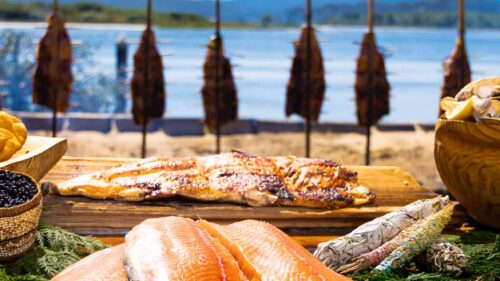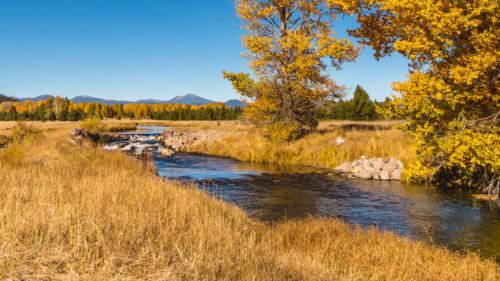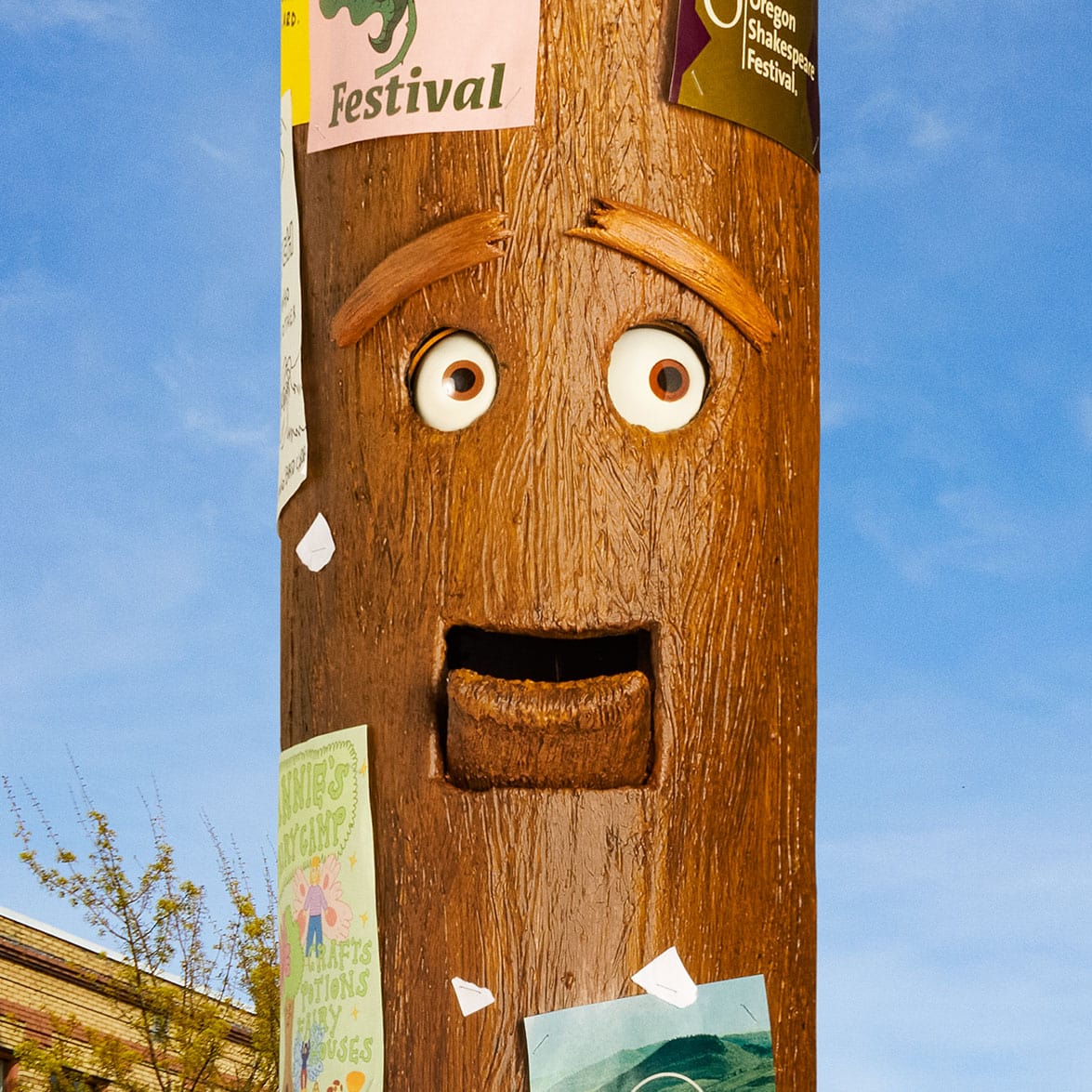Oregon’s beauty is not just rooted in its incredible landscape, it is the roots themselves that hold treasures.
Camas root has long nourished the people of the Northwest as a culturally significant staple. It’s served a pivotal role in the diet and trade of Tribal communities in Oregon as well as the land itself. And it’s been an important component of Tribal diets in Oregon for at least 10,000 years, with camas oven pits dating back at least 8,000 years. And it continues to be a staple for many Tribal families today.
“When we start a relationship with the traditional past, as in the foods, you also bring back the health of the people and part of that identity, too,” says David Lewis, a member of the Confederated Tribes of Grand Ronde, a descendant of the Takelma, Chinook, Molalla and Santiam Kalapuya peoples of Western Oregon. Lewis is an instructor at Oregon State University in anthropology and ethnic studies, and has studied extensively the role of camas and other Indigenous foods as part of the holistic health of Tribal communities.
According to Lewis, the current act of harvesting and preparing camas is borderline revolutionary, considering American history. The forced assimilation by the federal government and the establishment of reservations in Oregon — from the 1850s to the federal Indian Termination policies of the 1940s to 1960s — devastated Tribal foundations such as language, craft, culture, diet and other knowledge. Sixty-three Tribes in Oregon had been terminated due to these policies, including all of the Tribes in Western Oregon.
As the federal Indian Termination Policy era wound down in the 1970s and ’80s, Tribes that were able to be restored politically (at least on paper) then began the arduous process of restoring their identity. Food, both what we eat and where we obtain it, plays a pivotal role in cultural identity, Lewis argues.
Harvesting for Generations
Ron Suppah, a Tribal member of the Confederated Tribes of Warm Springs and member of their Reservation Fish and Wildlife committee, is lucky enough to be one of those knowledge holders. He learned to dig camas roots from his parents, who learned from the generations before them. His mother, Margaret Suppah, has been digging in the high desert of John Day for about half a century with no desire to stop any time soon. They collect camas in hopes of protecting not only the land but the health of their people. “Our people are from the land and we are rooted in that land,” Ron says.
So what makes this rare root so special? Wild camas is found throughout Oregon in moisture-rich areas like meadows, prairies, flood plains and soil-filled fissures in rocky terrain. The roots vary in size. You can see the long green stems sprouting out of the earth with grass-like basal leaves that erupt in explosions of rich purples and blues. The six-petaled star-shaped flowers gather together on the ends of the plant. During a heavy bloom, the flowers can appear to blanket entire areas with their gorgeous hues.
It’s just one of many Indigenous “first foods” in Oregon, which were never agricultural crops or commercialized but are integral to establishing relationships to the land, as well as to the cultural past. Camas root, central to many Tribes’ first-food ceremonies, is a slow-growing crop. Once plentiful across the region, now large camas fields are fewer and farther between due to white settlers’ agricultural practices like plowing, which disturbed existing camas bulbs. The bulbs require about 10 years to grow to a size significant for digging. The camas flowers sprout in two to three years.
Knowing the location of existing camas fields can require survey work, but most Tribal families that gather camas bulbs have harvesting spots that have been passed down from generation to generation. Tribes use sustainable-harvesting techniques such as replanting fragments of the bulbs and controlled burns to care for the areas.
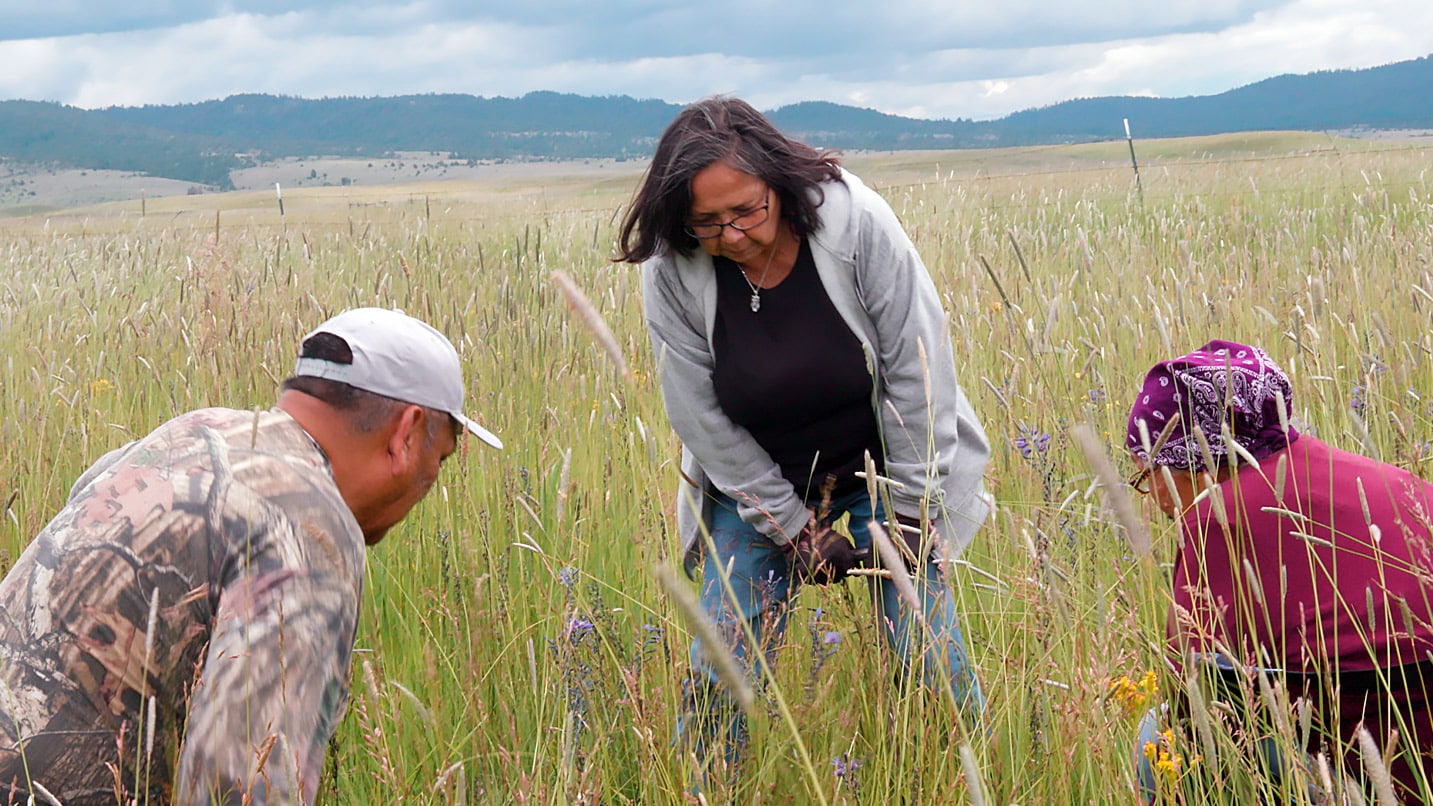
Passing Down Root Knowledge
Lewis advises that anyone interested in harvesting camas do so with the help of an expert, for the sake of both safety and sustainability. “People who want to do this kind of activity, like dig camas, need to work with Tribes” that know about this resource, he says. “They need to sort of work with people who know about the resource first, to learn about how rare it is.” Knowledge is critical to keeping safe. A harmful look-alike to the wild camas is the toxic death camas, which can be fatal if consumed.
Another way to learn about wild camas is to take a course at any of Oregon’s universities and colleges that offer ethnobotany courses. Lessons will often cover camas as well as other endemic roots, due to their importance in the local ecology. Tribes that provide cultural courses generally include the root — both the preparation and the history — as well as how to cultivate the plants on your own.
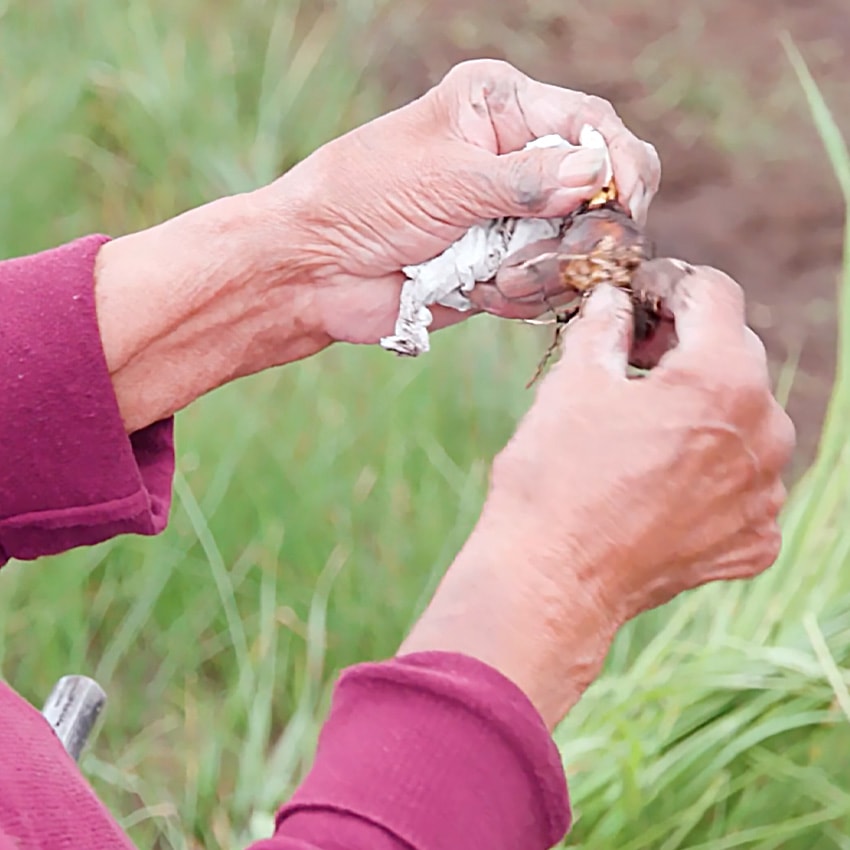
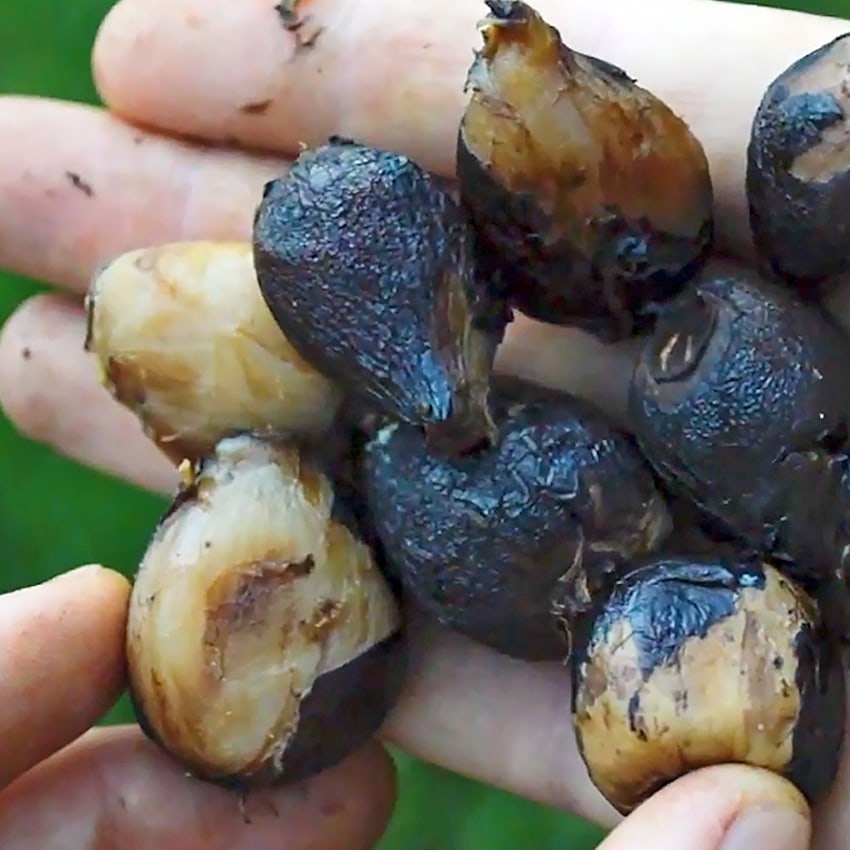
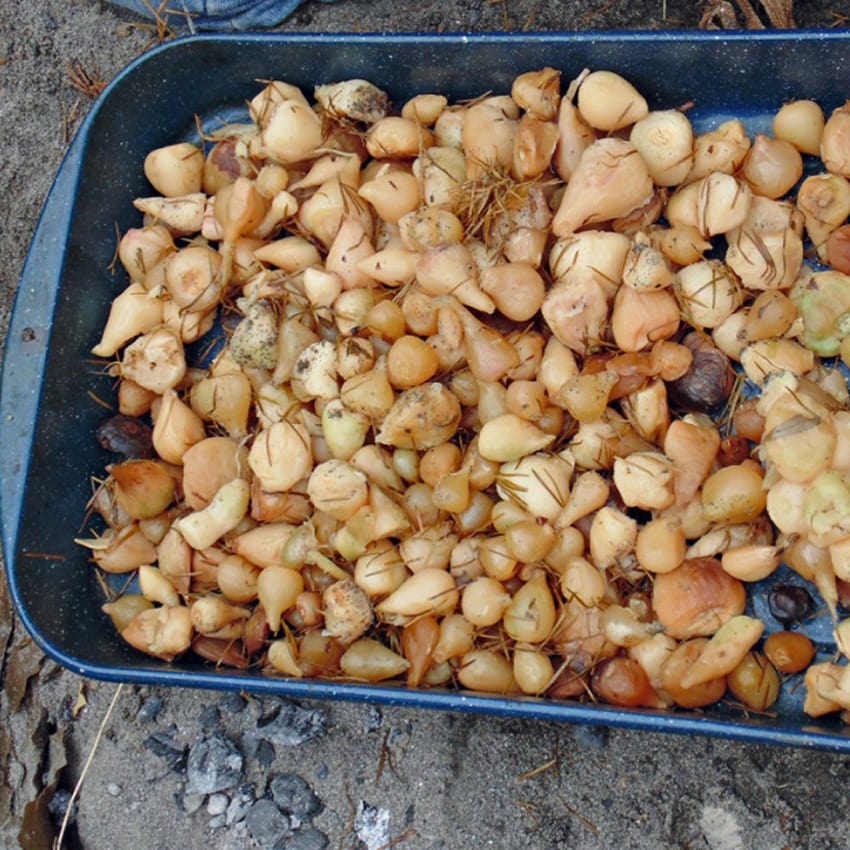
Tradition Meets Modern Times
Preparing camas to eat is just like growing it: a slow practice. Camas, with its beautiful flowers and tasty roots, is dug out of the ground, with whole days often spent gathering to yield any substantial quantity. Digging sticks are still sometimes used, though they have largely made way for shovels, given the depth some camas can grow — some burrow as far as 2 feet beneath the ground. After harvest you can start cleaning the plant, taking off the top and peeling the root almost like an onion, revealing a bone-white camas bulb.
Traditional camas ovens are big rectangular or oblong pits in the ground, with fire on the bottom and rocks stacked around the fire to heat up. Once hot enough, the cooker places a layer of leaves over the rocks, followed by a layer of camas, then leaves again, then camas and so on, creating a multilayered structure topped with dirt. For the next few days, the cooker checks the rocks periodically for warmth and replaces them as needed. After three or so days, the roots are caramelized, as the indigestible sugars have broken down during cooking into a more digestible fructose, rendering the bulbs incredibly sweet.
The process may sound labor-intensive, but most crops are — they just have large-scale commercialization processes that make it seem less so. Camas was never an agricultural crop due to the common sentiments at the time. “A lot of people who came here, who immigrated here, didn’t understand the foods here, so they wanted to eat their own foods, or they ate meat,” Lewis explains. “And because they were unfamiliar with it, they didn’t like the Native foods.” He adds: “I realized then that much of what we’ve seen in our history books is a reflection of [White settlers] not understanding the wilderness.”
Depending on how you cook it, you can also prepare the camas to be more mild in flavor. For example, by cooking it with potatoes, it takes on more of a potato flavor. Naturally high in magnesium, calcium, and vitamin C, this root proves it’s worth the work. It can also be steamed, roasted, used as a sweetener, dried whole for storage, or ground into flour for cakes and biscuits. Traditional underground ovens have largely given way to Crockpots for cooking, a three-day process that results in the same delicious product. Today’s Tribal families may add it to traditional stews and soups or cook it alongside cedar and pine needles. However you prepare wild camas, it’s a sure way to strengthen community spirit, pass down knowledge and expose more in the community to this culturally significant root.
Find More:
You can learn more about wild camas and other Native traditions at cultural centers across Oregon, including:
- Native American Longhouse Eena Haws visitor center at Oregon State University in Corvallis
- Many Nations Longhouse at the University of Oregon in Eugene
- Warm Springs Museum Cultural Center in Warm Springs
- Chachalu Museum and Cultural Center in Grande Ronde
- Tamástslikt Cultural Institute in Pendleton

